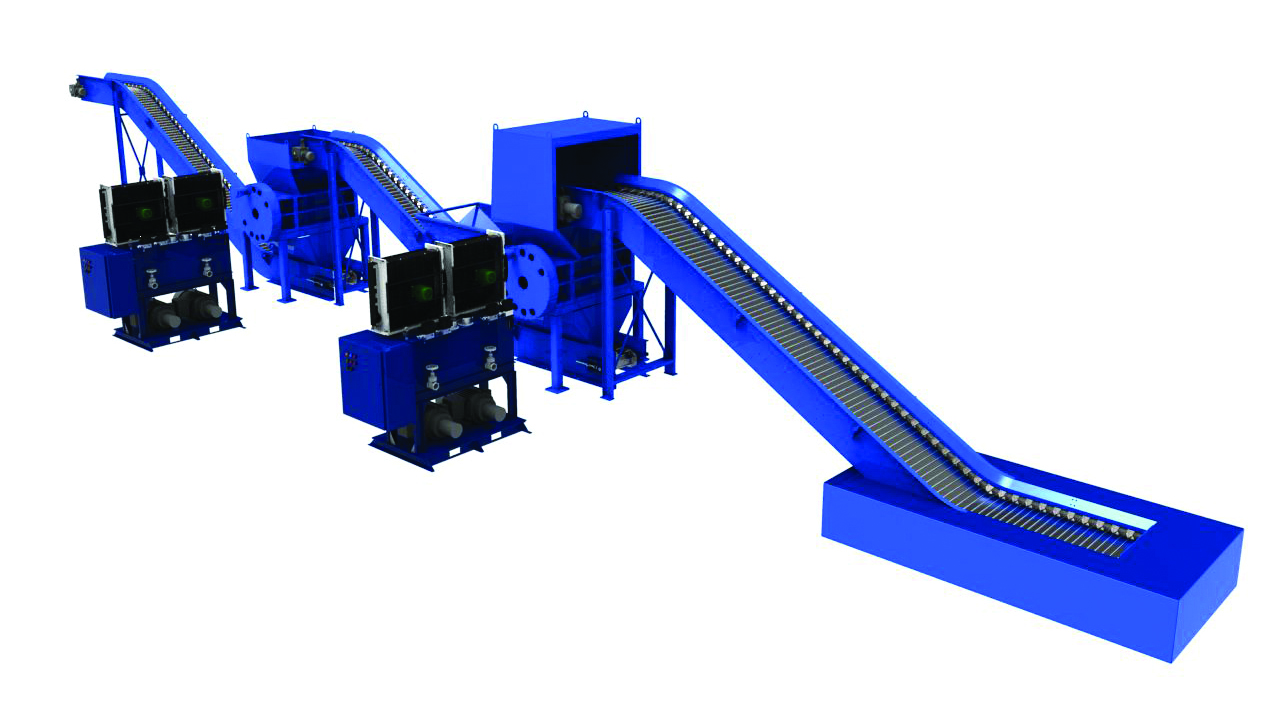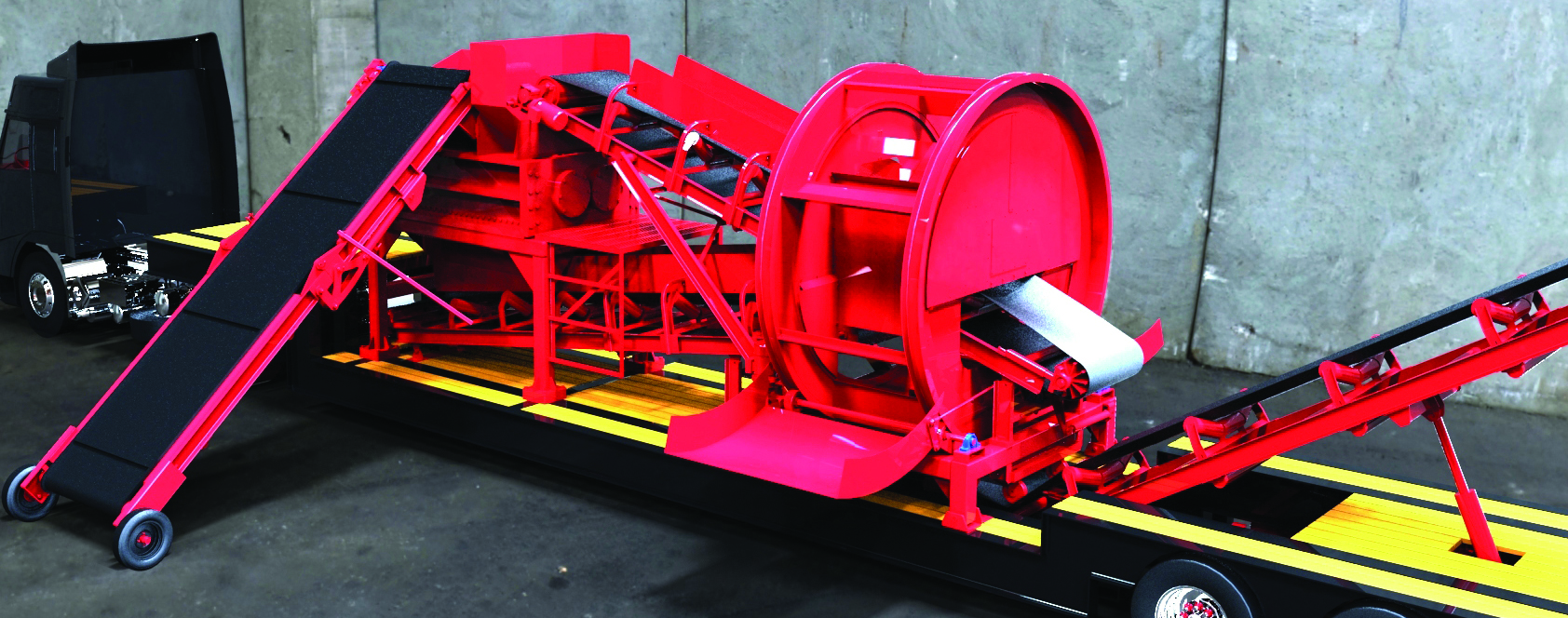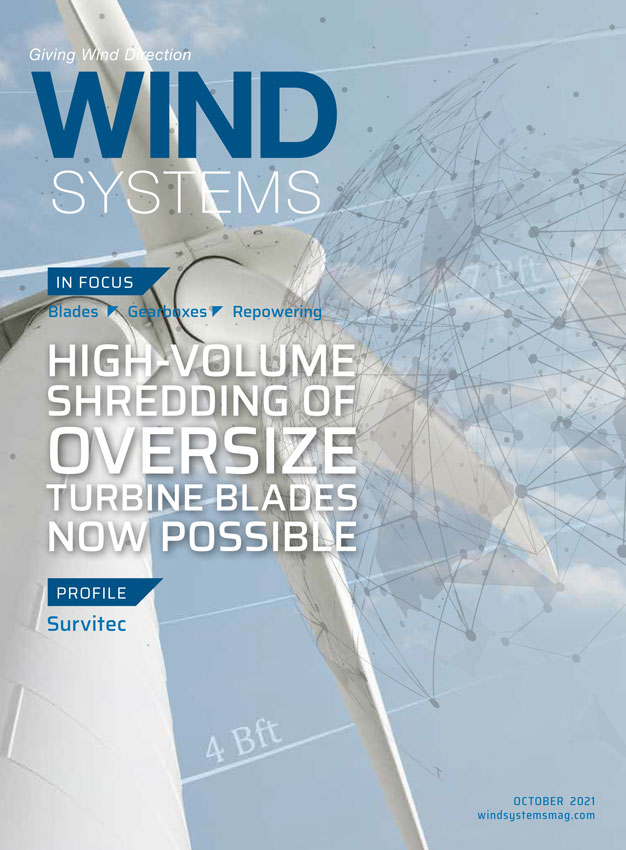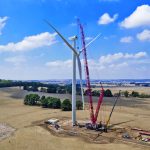In the wind-power industry, when turbines are eventually decommissioned or wind farms upgraded in a process called repowering, wind-turbine blades must either be disposed of or recycled.
However, giant composite fiberglass wind-turbine blades, which can be up to 80 feet long and weigh many tons, have been challenging to shred and recycle. Even after the blades are broken or cut into smaller chunks, the pieces can be too large for most feed chambers. Also, the thickness, brittle nature, and density of the composite parts are extremely challenging, as well as controlling the dust generated from shredding them.
With wind energy rapidly expanding, thousands of such distressed wind-turbine blades will need to be taken out of commission and recycled, increasing shredding volumes.
On top of this, such thick, dense composites can force maintenance issues in most shredding equipment, causing costly, lengthy breakdowns. In fact, shredding tough fiberglass, Kevlar, or other composites of any large forms down to specific, recyclable sizes often requires a primary and a number of secondary shredders in multiple step reduction while handling the dust collection and filtration.
Now, however, a new generation of advanced shredding technology can help composites recyclers reliably shred wind-turbine blades to chips at high volumes using unique advances in hydraulic systems.

Vulnerable Points
The problem is that traditional large capacity shredders have points of vulnerability such as knives, shafts, bearings, and hydraulics not truly designed for such loads or volumes. This can result in breakdowns and lost production downtime with long lead times for critical replacement parts and rebuilds.
The cumbersome process of shredding, screening, and grinding composites and materials to size with different equipment in separate operations has also traditionally been a bottleneck to processing. Screening is often a slower process than shredding.
In response, to ensure high production and reliability in such applications, industry innovators have developed high-volume, high-torque shredders with large chambers that enable efficient reduction of oversize turbine blades pieces.
With knife geometry modified to properly “grab” the material and feed it well in horizontal or vertical applications, the high torque, low speed equipment (like dual shaft shredders) minimizes dust generation as well as breakdowns, so the equipment is durable enough to last decades.
Getting to the root of the processing bottleneck, a new shredder knife technology is also enabling composites recyclers to simultaneously shred, chip, and size in portable or stationary systems, further speeding production and reducing processing costs.
Conventional Shredder Limitations
For truly high-volume composites recycling operations, the size of the shredder can restrict production flow if it is not large enough to accept oversized scrap and materials. Hydraulic shredders operating at a single RPM, using a single rotary piston or gear pump, also never maximize throughput regardless of load.
The lack of robust construction, designed for reducing tough materials at high-volume, inevitably leads to breakdowns and unscheduled downtime for repair and replacement.
Typically, shredder companies use 4,140 knives, traditional hard-face welding or even tool steel for their systems, but inferior knives increase recyclers’ top maintenance cost — knife rebuilds.
A host of other shredder design vulnerabilities can lead to catastrophic failures if not addressed:
- Expensive shaft washout, due to undersized material along with poor shaft or clamping nut design, as well as old-style hex shafts, can allow stack loosening during operation.
- Bearing failure, caused by contamination, often occurs when bearing seals and shaft armor insufficiently protect against shredding chamber compression forces.
- Perhaps the most consequential point of failure can occur when shredder manufacturers build hydraulic power supplies using a single but very expensive hydraulic pump or motor, which can cost up to $90,000 to replace with lead times of 12-plus weeks, resulting in excessive downtime.

Reinventing High-Volume Recycling
To help high-volume composites recyclers dramatically and cost-effectively improve their production with minimal downtime, industry innovators have redesigned and modernized shredder systems, which have not been substantially updated in generations.
One example, a customizable, high volume shredder is designed for the toughest wind-turbine applications involving composites in both stationary and portable units.
With 24-inch diameter hard-faced knives using a base AR-500 alloy, 55-inch to 72-inch by 44-inch cutting chambers, and eight-inch 4130 Chromoly steel shafts, the unit can quickly reduce even the largest wind-turbine composites scrap. With 24,000 to 38,000 pounds total gross weight (not including power supply), it is designed to shred 15 to 35 tons of composites or dense materials an hour with 179,000 foot-pounds of torque per knife.
When even more throughput is required, it can be rated up to 800 HP, and use dual cutting chambers. To maximize high-torque throughput and efficiency, it uses a pressure compensated variable displacement pump that allows the RPM to increase and decrease based on load.
The unit’s design addresses the vulnerabilities of conventional shredders by using inexpensive cluster drive system of eight small hydraulic motors that create redundancy in the power supply that eliminates much of the possible downtime. These cluster drive motors are off-the-shelf, and readily accessible, and they minimize cost while increasing reliability. Use of the cluster drives ensures continuous operability (at slightly lower output), even if one or more needs to be replaced.
Instead of seven-inch shafts, eight-inch Chromoly shafts increase usable life. In place of old HEX shaft design or a double key round shaft, the unit uses a six-key design where the knife literally rides on disposable keys, not directly on the shaft. With the keys taking any abuse instead of the shaft, the design eliminates shaft washout and simplifies knife changes.
Because the unit is designed with a double labyrinth style drop zone and outboard bearings, this eliminates any direct path to the shaft bearings. It also allows compressed material a path to exit the shredder, eliminating the “catastrophic costs” of bearing and shaft replacement.
To further enhance production, innovative shredders like this strike at the root of the processing bottleneck. Instead of using many shredders to progressively reduce the size of composites scrap, new shredder “knife” technology can uniformly cut to any size in a single pass without a screen, very quickly reducing scrap to a reclaimable proportion.
It uses a unique bed knife design in a dual shaft shredder to cut the width of the material of the shredder. The size of the end-product is based on the size and geometry of the rotary and fixed knives as well as their gap distances.
A shredder using this design can produce more than 85 percent correctly sized material in one pass with less than 10 percent oversized material. The knife system can reduce scrap to the appropriate size with much less energy than typical shearing and grinding equipment. Power efficiency approaches 150 percent over any standard shredder.

When the knife technology is used with composites, it can dramatically reduce shipping costs by minimizing voids in containers due to oversized material.
While such units are typically hydraulic, all-electric versions are an attractive option if a very large chamber size is required, but not high torque. All-electric versions are simpler, quieter, less costly, and even easier to maintain since the devices have no valves and cannot leak hydraulic fluid since none is used.
With a programmed “nip cutting” function, customers can save labor during the processing of materials when shredding the entire amount in one stream is not possible. Nip cutting (rotating shafts to cut big hunks into small pieces) saves the operator time trying to disassemble, reduce size, or cut the material to size.
Wind turbine composites recyclers needing high-volume shredding, whether high-torque or not, have been frustrated by costly production breakdowns and bottlenecks.
With industry innovation, however, wind turbine recyclers now have the ability to quickly, efficiently, and reliably reduce even the largest scrap materials and loads to size onsite in a streamlined process. This has the potential to significantly increase production, as well as reduce labor and shipping costs, to boost the bottom line.


































